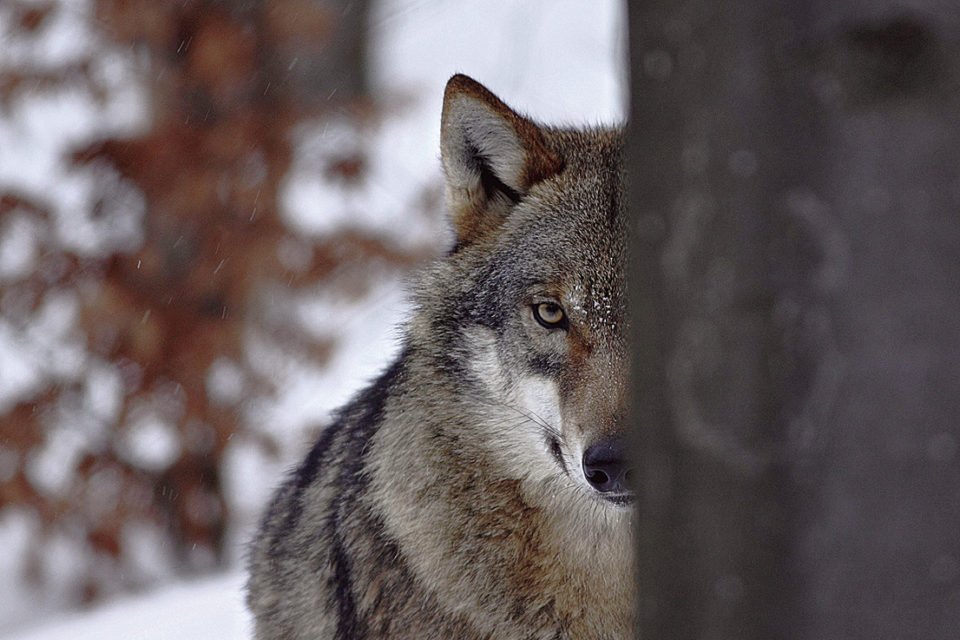On January 4, Minnesota resumed management authority for the state’s gray wolves when the U.S. Fish and Wildlife Service removed them from the federal threatened and endangered species list. The only state in the lower 48 where wolves were never extirpated, Minnesota presently has an estimated 2,700 animals occupying all suitable habitat across 40,000 square miles in the northern and central part of the state. Wolf numbers have held steady for at least two decades. Minnesota DNR biologists consider the population healthy and robust.
Changes in the animal’s legal status in Minnesota has changed multiple times since 2007 as wolf advocates have sought to continue federal endangered species protection via legal actions. The state has a wolf management plan in place and even held hunting and trapping seasons from 2012-2014. That management plan is currently undergoing an updating that involves extensive public input. DNR large carnivore specialist Dan Stark said the agency hopes to have the updated plan out for review within a couple of months. In the meantime, the existing plan guides the state’s wolf management. Currently, no wolf hunting or trapping seasons are scheduled.
A depredation program, which has existed for decades, allows state-certified or government trappers to remove wolves that have killed livestock and pets. The biggest change between federal protection and state management is Minnesota is now divided into Zone A, the northeast, and Zone B, which is the southern and western two-thirds of the state. The zone boundaries follow the boundaries of the 1837 and 1854 ceded territories (tribes also have the ability to manage wolves). More importantly, Zone A is lightly populated and considered to be the core area of the state’s wolf range. Zone B has a higher population and thus a greater likelihood of wolves coming into contact with humans.
In Zone A, state law allows owners of livestock, guard animals or domestic animals to shoot and destroy wolves that pose an immediate threat (defined as stalking, attacking or killing) to their animals, on property they won or lease, in accordance with local statutes. Anyone killing a wolf under this provision must protect all evidence and report the taking to a DNR conservation officer within 48 hours. The wolf carcass must be surrendered to the conservation officer.
In Zone B, a person may shoot a wolf at any time to protect livestock, domestic animals or domestic pets on land they own, lease or manage. The “immediate threat” aspect doesn’t apply, but a conservation officer must be notified within 48 hours and the wolf carcass surrendered. People in Zone B also may employ a state certified wolf predator controller to trap wolves on or within one mile of land they own, lease or manage.
State statute also allows the harassment of wolves that are within 500 yards of people, buildings, livestock or domestic pets to discourage wolves from coming in contact with people and domestic animals. Wolves cannot be attracted or searched out for purposes of harassment and harassment cannot result in physical harm to the wolf. Both federal and state regulations allow a wolf to be taken in defense of human life, with the same reporting requirements
as above.
The liberalization of circumstances where individuals are allowed to legally kill a wolf may have some folks wondering if it could lead to a high kill rate. Recent history suggests this is not the case. Stark said between 2012 and 2014, when wolves were managed under same rules, 24 wolves were killed in zones A and B. He knows of only a couple of instances where landowners employed a certified trapper to remove wolves.
Landowners can still seek assistance from state wolf control or the USDA Wildlife Services for wolf removal if they have a verified complaint of wolf damage. Livestock producers are encouraged to try alternatives to lethal wolf control and may receive grants from the Minnesota Department of Agriculture to purchase fencing or guard animals, such as donkeys. Stark says while alternatives are not effective in all situations, they may discourage wolf depredation.
Regulated wolf hunting and trapping will be addressed in the updated management plan. Stark says the DNR must recognize the diverse public opinions, because the idea of hunting or trapping wolves draws strong, emotional responses from many people. The experience of other states and provinces shows wolf populations can sustain relatively liberal harvests. Stark said previous seasons in Minnesota may have been conservative regarding the percent of wolves taken from the overall population. Also, previous seasons were not based upon an established wolf population goal.
Many of the public comments the DNR received have asked the agency to manage wolves for the benefit of prey species such as deer and moose. Studies in Minnesota have shown that wolves can suppress deer populations in some areas and have an impact on moose calf survival. However, deer population levels are also affected by winter severity, habitat quality and hunter harvest. Moose numbers are affected by disease, habitat quality and tick infestations. Importantly, no studies have shown what sort of reductions in the wolf population would be necessary to benefit deer or moose.
Stark said many people do not view wolves in the same light as other wildlife species and associate values with them. Many are opposed to hunting and trapping. He also said that no one in the public comments stated that Minnesota shouldn’t have wolves, including hunters and livestock producers. The challenge for the DNR in updating the wolf management plan is to strike a balance between conflicting views about the animal.
“We want to have a plan to support a healthy and resilient wolf population across the state and address conflicts where they occur,” Stark said. “It is important to recognize wolves are not a fragile species in risk of extinction or becoming endangered or threatened.”
The practices that were used to eliminate wolves from nearly all of the North America largely belong to an era long past. Biologists have never considered regulated hunting and trapping of wolves to be a conservation issue. We don’t know how the updated Minnesota wolf management plan will address hunting and trapping. What we do know is the DNR will ensure the continued existence of this iconic Minnesota animal.






